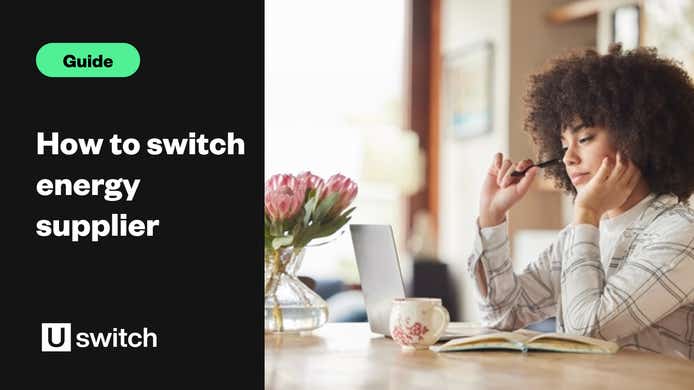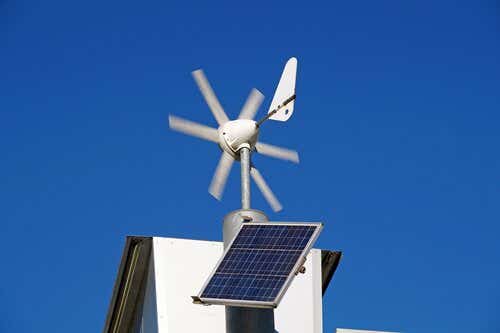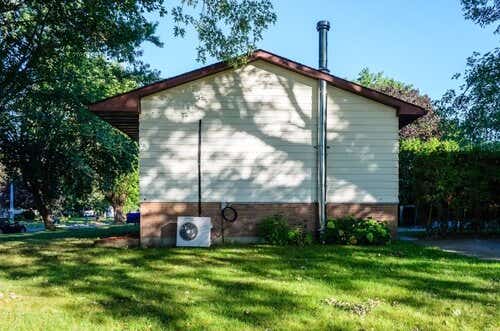Compare green energy deals
Whether you’re looking to switch to a green energy deal or you're after news and information about renewable energy, find everything you need here.

What is green energy?
Green energy, also referred to as renewable energy, is generated from natural and renewable resources that can be replenished and do not harm the environment — as opposed to being generated by finite resources such as oil or coal that also produce harmful greenhouse gas emissions.
Green energy can be generated from a range of sources, including the tides, the sun, the wind and more.
Green energy is a particularly appealing concept to many people because, unlike fossil fuels, such as coal and oil, renewable energy sources will not run out and it will not harm the environment in the same way energy generation from fossil fuels does.
Because of this increased demand, it's possible to specifically compare green energy suppliers. Most energy suppliers now offer green energy tariffs that offer some level of renewable energy.
You can use table filters to only show green energy plans when you run a comparison with Uswitch. Enter your postcode above to get started.
What are the advantages and disadvantages of green energy?
- Sustainability
Generating the energy doesn't have a negative impact on the environment (though the building and installation of power stations and wind farms can do).
- Reliability
Renewable energy is reliable - solar energy doesn't rely on direct sunlight, only daylight, while the UK is generally a very windy country.
- Potential to earn
If you generate your own energy, you can sell the excess back to the grid.
- No difference to supply
Getting renewable energy is exactly the same as getting energy generated from fossil fuels - your supply isn't any different and won't be affected during times of lower generation.
- Cost
Green tariffs can sometimes be more expensive than other tariffs, though differences in price are getting smaller.
- Greenwashing
It can be difficult to know exactly how green a tariff is - Uswitch's Green Accreditation can help demystify this.
- Space
If you generate your own energy with a heat pump or domestic wind turbine, you'll need space that will then be taken up with the installation of the equipment.
How to choose the right green energy deal
It's easy to shop around for the best green energy deal for your circumstances with Uswitch. Enter your postcode into the box at the top of the page and provide a few details about your energy usage, and then use the table filters to see renewable energy deals.
Check how green the tariff really is
Green energy tariffs can vary in terms of how renewable they actually are. We rank each tariff into Gold, Silver, and Bronze categories based on the amount of renewably-sourced energy they include. Find out more about Uswitch's Green Accreditation scheme below.
Consider the length of the deal
Most fixed green energy tariffs last from 12-24 months. Over this period, the energy price cap could change, meaning you could be saving against it at the start of the contract but paying more at the end, and vice versa. For that reason, carefully consider how long you want to stay locked in to a contract.
Keep up to date with the market
Even if you’re signed up to a fixed deal, it's a good idea to keep up to date with the energy market and stay informed about the latest market developments. This will ensure you’re well-placed to get a good green energy deal when it’s time to renew.

Switch to a green energy tariff with confidence using Uswitch Green Accreditation
Ready to switch? Uswitch's pioneering Green Accreditation scheme is here to help you make a well-informed choice.
1. Run an energy comparison by entering your postcode above and look out for the ‘green plan’ badge on your results table. You can also filter the results by renewable energy plans.
2. In ‘plan features’ on the results page select ‘green plans’. You can choose from Gold, Silver or Bronze accredited plans, which have been categorised based on the amount of renewable energy suppliers directly buy and the level of investment they are making to support the growth of renewable energy.
3. Once you’ve chosen your new green energy plan, we’ll handle the rest of the switching process for you. Your new renewable energy supplier and your current supplier will agree on a switching date and you’ll receive a welcome pack.

Which is the best green energy supplier for me?
The best green supplier is different for everyone. Each supplier operates differently, has varying prices for tariffs and offers different things to customers. You may prioritise the cheapest green energy supplier, or one that has a strong customer service record. Make sure you take your time and compare green energy suppliers before signing up to a deal to make sure you’re completely happy with your choice.
How can I power my home with renewable energy?
Renewable energy technology is rapidly developing, with homes across the UK investing in the likes of solar panels and heat pumps to heat their homes more sustainably and reduce their energy bills.
Solar panels
Solar panels use photovoltaic (PV) cells to convert sunlight into electricity, which can power your home or be sent back to the grid if unused. Efficiency improvements have made solar panels a popular choice for clean energy. Suppliers often offer two types: PV panels for generating electricity and thermal panels for heating water. Any excess electricity you need beyond what your panels produce is drawn from the grid.
Air source heat pumps
Air source heat pumps, or air-to-air heat pumps, are heating systems that work like air conditioners but in reverse. They’re installed outside your home and absorb heat from the air, even when it’s cold outside. This heat is then pumped indoors through radiators or underfloor heating. They’re low maintenance, don’t need fuel deliveries, and can save you money on heating costs.
Ground source heat pumps
Ground source heat pumps absorb heat from the ground using fluid that circulates through buried loops in trenches. The fluid carries the heat back to the pump, before being sent to your home’s heating system. Installation involves digging up your garden to lay the pipes, but once they’re in, your garden will look the same as before, so the disruption is only temporary.
“Green energy tariffs and more environmentally-friendly ways of powering homes are becoming increasingly popular. While you can switch to a green energy tariff in minutes, though, there's a lot more to consider if you're thinking of investing in solar panels or heat pumps.
It's worth researching your options to be certain that investment in green energy is the right thing for you, your lifestyle and your wallet.”

How has the UK's green energy industry changed?
Did you know that in 2023, green energy made up nearly half of the UK’s energy production? Our green energy statistics page is jam-packed with relevant stats about the world of green energy, including usage rates, industry data, and much more.

How are people using green energy at home?
Did you know that over half of consumers surveyed in 2023 said they were willing to pay more for a house with renewable or low-carbon energy sources like solar panels, heat pumps or EV chargers?
Find out about all the latest news, views, and developments of residential green energy in our green home statistics page.
Calculate your carbon footprint
Find ways on which you can reduce and offset your household’s CO2 production.
Read more:
FAQs
What kinds of green electricity are there?
- Wind energy — The UK has many wind farms, both on and offshore. Read more about the pros and cons of wind energy here.
- Hydroenergy — Also known as hydropower, this form of renewable energy uses water turbines to generate electricity.
- Tidal energy — Another form of hydroenergy that utilises tides to run water turbines.
- Solar energy — About a million households in the UK have solar panels for their home. These panels convert light from the sun into electricity and allow homes to generate their own green energy.
- Biomass — Involves burning organic materials to produce electricity.
- Geothermal — The use of the natural heat below the earth’s surface to generate green electricity or heat homes directly.
How does green gas work?
Most green energy plans offer 100% renewable electricity, while many suppliers are also beginning to offer a level of “green gas” by turning organic matter into biomethane. Green gas comes from a process called anaerobic digestion, where bacteria is used to break down food or farm waste to produce gas. This green gas is carbon neutral as it is produced from materials that absorb CO2 that is then released back when the gas burns.
Hopefully in the future all gas can come from renewable sources but at the moment, there are not enough biomethane plants in the UK to make it a cost effective alternative to fossil fuels. This means suppliers still have to use natural gas to make sure customer demand is met. Some suppliers invest in additional carbon offset schemes to make sure the natural gas used is carbon neutral, even where green gas is not available.
Do green energy plans cost more?
Green energy plans can cost a little more than non-green plans, but what’s important to note is that they will almost always still be cheaper than a standard variable plan. While your green plan may not be the absolute cheapest deal on the market, a fixed deal should still be at the lower end of what’s on offer.
Who is the best green energy supplier?
The best green supplier is different for everyone. Each supplier operates differently, has varying prices for tariffs and offers different things to customers. You may prioritise the cheapest green energy supplier, or one that has a strong customer service record. Make sure you take your time and compare green energy suppliers before signing up to a deal to make sure you’re completely happy with your choice.
How should I choose a green energy supplier?
When it comes to choosing a green energy supplier, everyone prioritises different things. Price could be key for you, and while green tariffs are generally a bit more expensive than non-green tariffs, a fixed green deal will still probably cost you less than a standard variable tariff.
If the source of your green energy is important to you, check potential green suppliers' fuel mixes to see how the green electricity is sourced. This will allow you to see which providers are actually green and which might still be generating a percentage of their power through fossil fuels. When it comes to green gas, the best way to check is via the Plan Info section accessible through the results table when you compare energy deals through Uswitch. This clearly explains how green the green tariff is, assuming you've selected one. It's important to be aware that any green gas generated is almost certainly going to be mixed with natural gas as the UK doesn't produce enough green gas to supply the whole country. However, most companies offer carbon offsetting as an alternative to green gas, so ensure you have a look at the way they do this before signing up.
There are other factors that might affect which green energy supplier you use, such as customer service records and rewards or add-ons. Make sure you know what your priority is, and use that to guide your decision.
Do electric vehicles use green energy?
Electric vehicles use electricity, but whether the electricity is green or not is up to you and the tariff you sign up to. The electricity is only green if it comes from a renewable source which, if you’ve decided to invest in an electric vehicle, should already be something you’re thinking about. If the electricity you power your vehicle with isn’t renewable, it negates the point of buying the vehicle in the first place and will result in a less positive impact on the environment.
How green is biomass energy?
Biomass may be counted as renewable source of energy, but it isn’t as clearcut a source as the likes of solar or wind energy. The main issue is that burning biomass waste releases CO2 and carbon monoxide into the atmosphere. Because plants and trees can be planted to replace those used in the process, it’s still technically a renewable energy source, but those harmful effects of biomass production have meant that many energy suppliers are now reconsidering its place in their fuel mixes.
Does nuclear energy count as renewable?
The material needed to power a nuclear power plant is not renewable. The rare type of uranium that most plants use is a finite resource like coal so, although nuclear power plants generate clean power that doesn’t pollute the environment when it’s generated, it can’t be truly called renewable.




